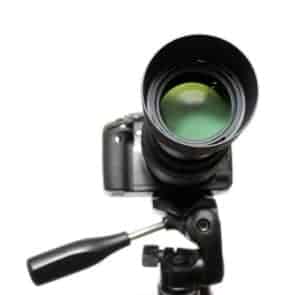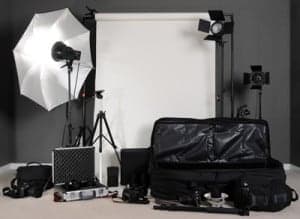Ten Unique Photography Tips For Beginners
1: Envision, plan, and then create
There is nothing–at all-wrong with looking at great photography to get creative inspiration. Spend the time thinking and thinking of what type of photo you want to create and how you can do it. Then, get to work. Almost every one of my best shots are the result of weeks of planning. Rarely did I just “happen” to find a great scene or model to photograph. Make each photo “your own,” whether it be a little bit different lighting or composition, make it feel personal.2: The histogram is NOT optional
Spending just 5 or 10 minutes to learn how to use the histogram can make a huge difference in your photography. Personally, I use the histogram most of the times that I go out and shoot. I use it when shooting a wedding to make sure that the bride’s dress is not overexposed, I use it when shooting landscapes in low light to make sure I am gathering enough light, etc. Learn to use the histogram.3: Learn to wirelessly fire the flash off-camera
By getting the flash off the camera, the lighting changes dramatically for the better. Directional light throws pleasing shadows on the subject and highlights the natural curvature of the face. If you haven’t yet learned how to fire the flash off-camera, I recommend checking out my lighting gear recommendations page. There, you’ll find a $20 flash trigger that works flawlessly. No need to change camera settings at all. Just put the trigger on the hot shoe of your camera (the hook on the top of your DSLR) and attach the flash receiver to the bottom of ANY flash. That’s all it takes. Take a picture and your flash will fire.4: Learn to change the active focus point
For most (but not all) photography, I recommend using a single autofocus point rather than allowing the camera to choose several points. When many photographers learn to use one focus point, they often use only the center focus point. To do this, they focus on the eye of the subject or on the correct place for a landscape, and then recompose the picture while holding the shutter button half-way down. After composing to the correct composition, the photographer then finishes pressing in the shutter button. If you sit down for a minute with your camera manual and learn to change the focus point, then you will likely get a much larger percentage of your shots in focus.5: With tripods, it’s “Buy right, buy once”
Several of our Improve Photography community commented that they wish they wouldn’t have wasted their money on cheap tripods. The cheapies might seem like good deals, but you’ll end up buying four or five before you finally break down and buy a good one that will last your lifetime. Not sure which tripod to buy? Check out my recommendations of the best tripods on the market.
Ahhh... yes. That 'll do it. Just set down your camera, do the finger composition thingy, and everything will fix itself.
6: Photography is REALLY about composition and light
When I saw this tip, which was submitted by Roel Knol, Chand Dumbris, Patsy J Lander, on the Facebook page, I knew this one had to be included in the list. Personally, I spent about the first year of my photography focused on the tiny little technical details, hoping my photography would improve. I learned too late that great photography is about interesting light and strong composition. Everything else is just a cherry on top.7: Manual Mode
There is no need to be afraid of manual mode. Just turn it on and start playing–you’ll figure it out quick. If you understand what shutter speed, aperture, and ISO do, you’ll quickly learn how to shoot in manual. Perhaps the biggest mistake beginning photographers make when starting to shoot in manual mode is that they expect to nail the shot the first time. Manual mode is a process of trial and error. You’ll get faster and faster at judging the correct settings, but you have to accept the fact that it will take a few tries for each set up.8: Bounce flash
Most photographers buy a flash with their new camera, but most beginners just aim the flash head right at the subject and shoot. If you point the flash at the ceiling or a side wall and bounce the flash onto the model, you’ll get significantly softer and more flattering light. It’s incredibly easy to learn, but many photographers are afraid to try it for the first time.
This
photo illustrates two principles:
(1) This is a great use of exposure
compensation to get a bright and warm feeling. (2) Yes, it is
apparently possible to be TOO in love with your camera.
9: Exposure Compensation
I must admit that it took me a while to learn to use exposure compensation. I felt like my head was already spinning just trying to understand the aperture, so the thought of changing the exposure in aperture priority was a daunting task when I started out. Once I tried it, though, I was so glad I did! Exposure compensation is simply a way of telling the camera that the exposure it is picking is not what you want. You simply scroll the little wheel on your camera to choose a brighter (+1 or +.7 exposure compensation, for example), or a darker picture (-1 or -.7 exposure compensation). You set the exposure compensation and then the camera will choose the setting that it things is the correct exposure and then add or remove a little brightness according to what exposure compensation you choose.10: It is NOT “cheating” to use Photoshop
I have strong feelings about the importance of using digital image editing in our photography. In fact, I had a conversation with Dustin Olsen (who is working with me at Improve Photography now), about digital image editing a couple days ago and was glad to hear that he feels just like I do. My photography is not news, my photography is art. Just like a painter can put whatever she wants in a painting, I feel that I can do whatever I want to my photos in Photoshop as long as I don’t lie and tell people it is a representation of the actual scene. If you’re passionate about this topic too, check out this articleon why I think digital image editing is perfectly okay.11: Don’t buy more gear until you hit a wall with the gear you already have
I often get emails from brand new beginning photographers asking what lens they should buy because their 18-55 kit lens isn’t sharp enough. I’ll be perfectly honest… I’ve never met a photographer who has less than one year of experience who is better than the kit lens. I’m not saying that their pictures couldn’t be helped out a tiny bit by a sharper lens, but I am saying that there are about 100 more important things for a beginner to master before anyone is going to notice that the picture is barely less sharp from the lens. 99% of sharpness problems that I see are caused by poor shooting technique, and not a cheap lens. Once the photographer masters the fundamentals, then a new lens is an important investment and the sharpness will definitely improve. The same is true for many other photography gear items. It isn’t necessary to buy $3,000 in studio equipment unless you’ve already learned how to use a bare bones $120 lighting set upto its full advantage. It probably isn’t necessary to buy a $1,500 macro lens until you’ve reached your limit by using a simple close focus filter. It probably isn’t necessary to buy a 5d mark II until that is the weak link in your photography. I love gear, but I feel bad when I hear photographers say they feel limited by their beginner gear when, in reality, they should probably just get out there and shoot more.
Subin Sebastian
(Creative Photography)







































